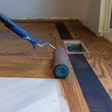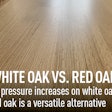Indoor Air Quality (IAQ) is certainly my nominee for the green term of the year. It is not just a general consideration for our industry, but now a mainstream topic of conversation. It is in the news regularly and has changed how we market. We have CARB in place, with the American EPA and Canada’s CSA moving forward with national regulations/standards. And of course in LEED v4, the requirement that products selected support good IAQ seems to trump all previous criteria, such as FSC or recycled content.
You know it’s not easy to set these standards or even keep up with them all. LEED has a chart that’s being constantly updated with references. Canada’s CSA is working on a new formaldehyde standard. CARB is looking at updating its own requirements. And the EPA still hopes to get its nationwide plan of mirroring CARB emissions out this coming spring, but it’s not an easy task.
Recent news stories imply that the industry might be attempting to block or delay the American EPA regulations, but from my perspective that simply isn’t the case.
Let’s talk about the challenges of establishing regulations for a moment. Recent news stories imply that the industry might be attempting to block or delay the American EPA regulations, but from my perspective that simply isn’t the case. Rather, the government has found it understandably difficult to create pragmatic regulations.
At this point in time, everyone agrees to set emission levels to those used by CARB. However, after that, it is not easy to design the details of the regulation. The thing is, EPA can’t just “copy” CARB exactly and call it done. A federal regulation is different from a state one. Let me give you one example of the challenges they face—an issue that industry addressed in their commentary on the first draft of the regulation.
The new regulation would make it illegal to manufacture or sell uncertified material. That seems OK, right? But you can’t get certified if you don’t have a history of manufacturing the product to be tested—you need actual production to develop a record of tests and prove your management system. Do you see the circle we have here? After the regulation goes into effect:
• It is illegal to manufacture uncertified material.
• You can’t get certified unless you first manufacture uncertified material for testing.
• It is illegal to manufacture uncertified material.
How can you build a new factory to produce composite wood products if it is illegal to produce uncertified material but you can’t get certified unless you produce uncertified (illegal) material first? It’s a tough one. No one wants to see this regulation stop the expansion of the domestic industry, so the EPA is trying to address unintended consequences like this. (CARB didn’t have to worry about this. A manufacturer in South Carolina for example, who wanted to sell into California could produce uncertified panel for 49 other states, or for export, to build up a record of production to meet CARB’s requirements. But the EPA covers all 50 states. Under the first draft there is no way for a new domestic facility to produce uncertified material to establish a basis for certification—not even for export.)
You can see this is not an easy task. People putting pressure on the EPA to just hurry up and get it done need to consider how complicated this can be. And that’s just one issue—depending on how they write the final reg, we’re talking not just about certifying giant plywood producers. Unless changes are made from the original EPA proposed rule, even a high school wood shop might require certification. It could mean labeling a coat hanger. It could mean carpenters needing to test kitchen cabinets they build on a job site. It could mean hazmat warnings on trucks delivering furniture. All of these things are issues they are trying to avoid, but all were possibilities that could have resulted from the first draft. The bottom line is that this is far from a simplistic regulation and there are very good reasons the EPA is struggling with the details.
And of course, the EPA regulation doesn’t mean the end of CARB, either. The industry will have to continue to work under both regulations, plus the new Canadian program as well. On a positive note, thankfully both EPA and CARB appear to be earnestly interested in working together to iron out the differences and make it manageable for industry to operate under compatible regulations. And the CSA worked very hard to mirror CARB to minimize the impact of a third standard coming into play. That is time well spent – any difference between the CARB, EPA and Canadian rules will create confusion and costs without helping the consumer or improving their IAQ.
































